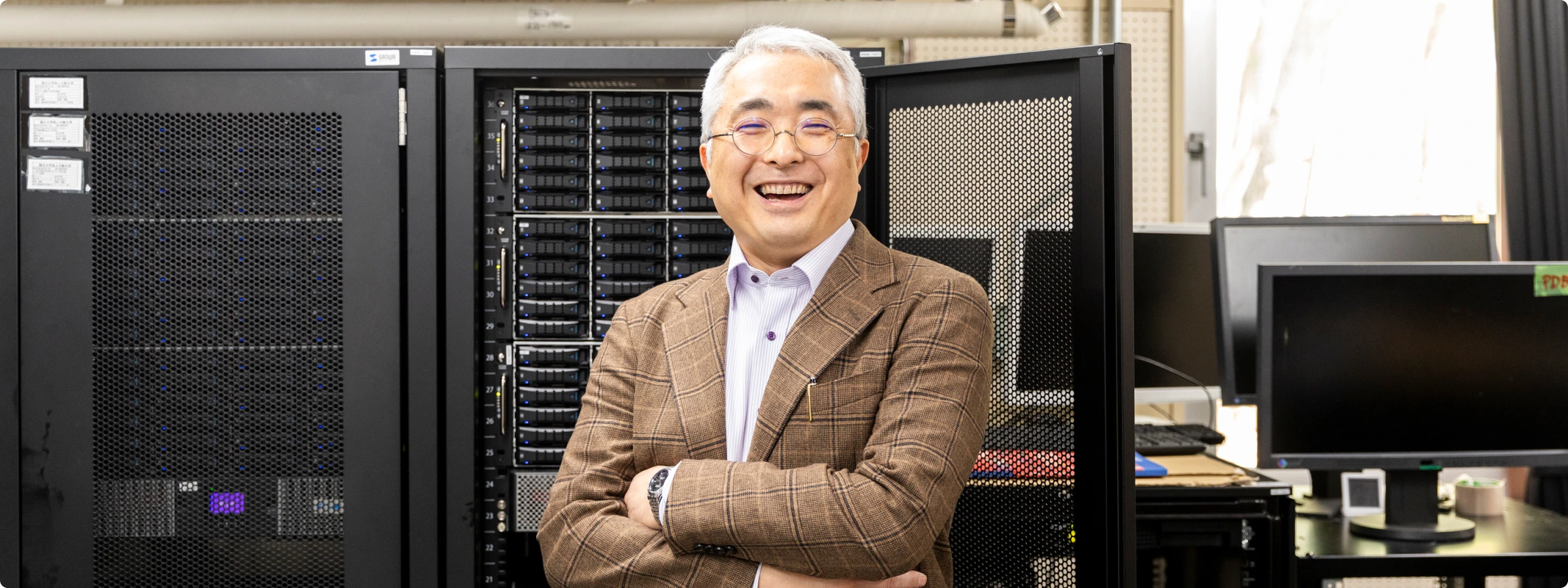Researcher
Genji Kurisu Professor
- Laboratory:
- Laboratory for Protein Databases
- Research Interests:
- Managing the single global archives collaborating with other regional data centers in the USA and Europe.

Overview
We have developed and maintain the Protein Data Bank (PDB), a single global repository for experimentally determined three-dimensional structures of biological macromolecules such as proteins and nucleic acids, under the international partnership between other regional data centers in the USA and Europe. Along with related databases, PDB is made freely available to researchers worldwide from our site for more than 20 years. This activity is known globally as Protein Data Bank Japan (PDBj), which includes development of original tools and secondary databases. The databases have over 2 million accesses/downloads daily and are widely used in a broad range of research fields—from basic science to applied studies such as drug discovery.
Q&A

What are the unique aspects or strengths of your research?
Experimentally determined structural data of biological macromolecules such as proteins and nucleic acids are curated in a single global archive—the Protein Data Bank (PDB). The PDB has been selected as a Global Core Biodata Resource (GCBR), making it a world-leading database that support fundamental life sciences research. One strength of our research is that this internationally significant database is hosted at the University of Osaka, where global standards for the PDB are also being developed and maintained.
How do you think the results of your research will benefit society or industry?
The Protein Data Bank (PDB) is a fundamental information resource essential for drug development and industrial applications. Nearly all pharmaceutical companies use the PDB for drug discovery. Additionally, having an international database hub located in Japan makes it possible to share highly reliable information in Japanese, contributing to education in high or junior high school as well.
How is data science utilized in your research?
This research serves as a fundamental data resource for Life Science. Over many years, the Protein Data Bank (PDB) has been developed and made publicly available as open data for free use. This long-term effort contributed to the development of groundbreaking structure prediction methods—such as RoseTTAFold and AlphaFold—which were highlighted with the 2024 Nobel Prize in Chemistry. The Nobel laureates have commented that PDB played a crucial role in enabling their research.
Please share examples of collaborative research or the potential for future collaborations.
In addition to our own laboratory, the PDB are curated, processed and maintained in collaboration with several international teams. This includes Prof. Stephen K. Burley’s group (RCSB PDB) at Rutgers University and the University of California, San Diego, as well as Prof. Jeffrey C. Hoch’s group (BMRB) at the University of Connecticut, which focuses on NMR experimental data. Furthermore, we are partnered with the team led by Drs. Sameer Velankar and Kyle Morris (PDBe & EMDB) at the European Bioinformatics Institute (EMBL-EBI) in the UK. Since 2022, we have also embarked a collaborative project with Prof. Wenqing Xu’s group (PDBc) at the National Facility for Protein Science in Shanghai, China. In Japan, we are collaborating with Prof. Katayama’s group at DBCLS to make the use of databases more integrated.
What are the prospects and goals for your research?
As an international data center based in Japan, after 25 years of globally recognized research, we are using our experience to quickly provide accurate and easy-to-use information not only in English but also in Japanese, Chinese, and Korean. As we mark 25 years of progress, we aim to enhance international collaboration and promote a more integrated approach to data usage, continuing our role as a hub that supports life science research through a robust information platform.
Selected papers
- G.-J. Bekker, C. Nagao, M. Shirota, T. Nakamura, T. Katayama, D. Kihara, et al., Protein Data Bank Japan: Improved tools for sequence-oriented analysis of protein structures, Protein Science, 34(3), e70052 (2025).
https://doi.org/10.1002/pro.70052 - The wwPDB Consortium, EMDB—the Electron Microscopy Data Bank, Nucleic Acids Research, 52(D1), D456–D465 (2024).
https://doi.org/10.1093/nar/gkad1019 - J. C. Hoch, K. Baskaran, H. Burr, J. Chin, H. R. Eghbalnia, T. Fujiwara, M. R. Gryk, T. Iwata, C. Kojima, G. Kurisu, D. Maziuk, Y. Miyanoiri, J. R. Wedell, C. Wilburn, H. Yao, M. Yokochi, Biological Magnetic Resonance Data Bank, Nucleic Acids Research, 51(D1), D368–D376 (2023).
https://doi.org/10.1093/nar/gkac1050 - S. Velankar, S. K. Burley, G. Kurisu and J. C. Hoch and J. L. Markley, The Protein Data Bank Archive, in R. J. Owens (ed.), Structural Proteomics, Methods in Molecular Biology, vol. 2305, Humana, New York, NY (2021).
https://doi.org/10.1007/978-1-0716-1406-8_1 - G.-J. Bekker, M. Yokochi, H. Suzuki, Y. Ikegawa, T. Iwata, T. Kudou, et al., Protein Data Bank Japan: Celebrating our 20th anniversary during a global pandemic as the Asian hub of three dimensional macromolecular structural data, Protein Science, 31, 173–186 (2022).
https://doi.org/10.1002/pro.4211
